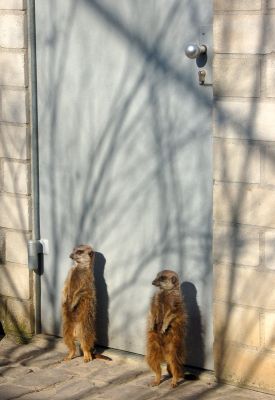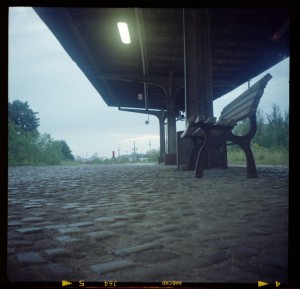
Customers expect creativity from agencies: Whether advertising, marketing or indeed PR, we are expected to come up with ideas that are fresh, different and well, simply creative so that our customer’s brand stands apart from their competitors. And of course, so that their messages are not only heard but also understood above the cacophony of communication jargon.
I’ve been working in PR for more than 15 years now. My work at Sympra has involved supporting brands in Germany, across Europe and, with the help of our partner agencies, around the globe. These partner agencies as members of the Public Relations Network meet twice a year: lively meetings where we exchange ideas, experiences and trends in our respective markets. It’s always refreshing hearing from PR professionals around the world and the time away from the desk gives us a new dynamic when thinking about new ideas.
Taking this principle a step further, Sympra decided to introduce the create5 programme: The team was given the opportunity to visit selected destinations around the globe and spend time thinking about how we could drive additional benefits for our customers, our agency and further develop our creative thought processes. The deal: come back with five new ideas and tell us what we don’t know!
So, this blog post finds me in Seattle, Washington – a long way from my desk, my colleagues, my country and indeed, my continent. I’m privileged enough to be working at our U.S. partner agency Communiqué Public Relations and participating in their brainstorming processes and everyday agency life. The experiences so far this week have me thinking about creativity and how to continue to come up with concepts that differentiate our customers’ unique PR messages. This week is my personal creativity week, and this is my formula, my creativity SLAM:
- Step away from the desk: When trying to come up with ideas, it often helps to break your routine. Advertisers call this disruption. Do something else and let your thoughts flow. The thoughts that stick and that keep coming back can be developed.
- Listen: We listen as PR people. We are trained to listen and understand and then translate messages in a creative and comprehensive way for the public. Being in a different country, I’m listening in a whole new way because everything is just completely different: Being in a different market, Communiqué exercises and addresses creativity differently than we do at Sympra and I’m hungry to listen to as much as I can. There’s so much that be adapted and translated to our market!
- Ask: As children we constantly ask what we want to know more about. As adults we sometimes don’t have time. As PR professionals we are born communicators and so sitting here with a PR team on the other side of the world, we are curious to learn from each other and refine our understanding of PR in each other’s markets.
- Move: When I’m done here at the end of next week, I won’t be standing still: Creativity is a process and a process always progresses I’m very much looking forward to moving the ideas I’ve gathered in Seattle and translate them into practical concepts for our customers, for Sympra, and for our global Public Relations Network.
.
It’s mid-week already but I already feel that I have learnt a great deal that I can use and turn my creativity slam into a creativity slam dunk!



 Why should journalism be any different from the way television programmes are aired nowadays? With Twitter and other social media channels people have not only found their voice, they have also learnt how to form an opinion and then put it out there onto the airwaves. This is true of television and now this is increasingly true of print journalism. With the rise of the global economic downturn, the world of journalism and the public sphere is being liberated. If a newspaper cannot afford to be printed, then it is forced to move online, if the medium shifts from print to electronic then social media comes to the fore with blogs and twitter possibilities for readers – the public will answer back and they will answer back loudly, clearly and with an eloquence that is unprecedented – it seems that this shift will enable us to move out of the time capsule where the public agenda was set by journalists and editors. Of course, once these people are online, they can find out hordes of information. Links onto other sites will guide them quickly and efficiently and with practice many will train themselves to discern the “truth” without the engaging smile of a politician trying to convince them of the opposite.
Why should journalism be any different from the way television programmes are aired nowadays? With Twitter and other social media channels people have not only found their voice, they have also learnt how to form an opinion and then put it out there onto the airwaves. This is true of television and now this is increasingly true of print journalism. With the rise of the global economic downturn, the world of journalism and the public sphere is being liberated. If a newspaper cannot afford to be printed, then it is forced to move online, if the medium shifts from print to electronic then social media comes to the fore with blogs and twitter possibilities for readers – the public will answer back and they will answer back loudly, clearly and with an eloquence that is unprecedented – it seems that this shift will enable us to move out of the time capsule where the public agenda was set by journalists and editors. Of course, once these people are online, they can find out hordes of information. Links onto other sites will guide them quickly and efficiently and with practice many will train themselves to discern the “truth” without the engaging smile of a politician trying to convince them of the opposite.  Facebook status messages, twitter et al have been playing a huge role in our society for some time now. At our last PRN meeting all the agencies confirmed the significant increase in online social media PR that they were doing. Not really a surprising development. A few years ago, I had lost all contact with most of my old school and uni friends – had no idea what was happening in their lives – were they married, were they divorced, were they still alive even? Now, Facebook not only allows access to their lives and core data: married, 2 children, interested in dogs, cats and the state of the world, but I’m also provided with information such as “I got into a scrap with the taxi driver last night” and “I had a wild time and spent the whole night suffering on for it” – really who cares? In the past year we have gone from absolutely no information to far too much information and more interestingly, information that is completely irrelevant and that no-one is even interested in. In a world of advertising and fierce marketing have we come to the point where we continually have to market ourselves? If we aren’t on Facebook, we have no face, we don’t exist? If we don’t continually write status messages, we have no status?
Facebook status messages, twitter et al have been playing a huge role in our society for some time now. At our last PRN meeting all the agencies confirmed the significant increase in online social media PR that they were doing. Not really a surprising development. A few years ago, I had lost all contact with most of my old school and uni friends – had no idea what was happening in their lives – were they married, were they divorced, were they still alive even? Now, Facebook not only allows access to their lives and core data: married, 2 children, interested in dogs, cats and the state of the world, but I’m also provided with information such as “I got into a scrap with the taxi driver last night” and “I had a wild time and spent the whole night suffering on for it” – really who cares? In the past year we have gone from absolutely no information to far too much information and more interestingly, information that is completely irrelevant and that no-one is even interested in. In a world of advertising and fierce marketing have we come to the point where we continually have to market ourselves? If we aren’t on Facebook, we have no face, we don’t exist? If we don’t continually write status messages, we have no status? 